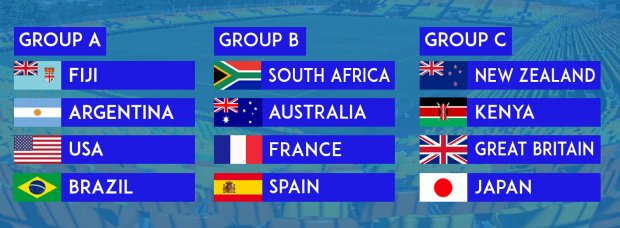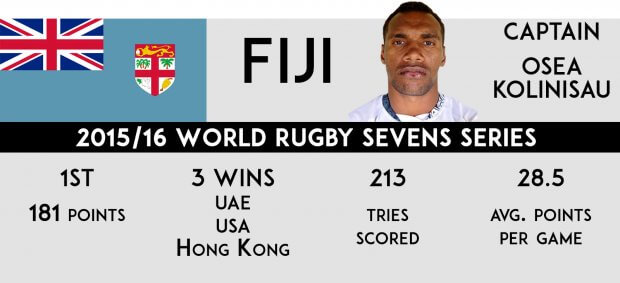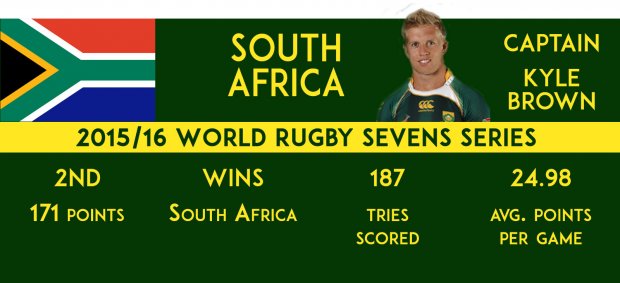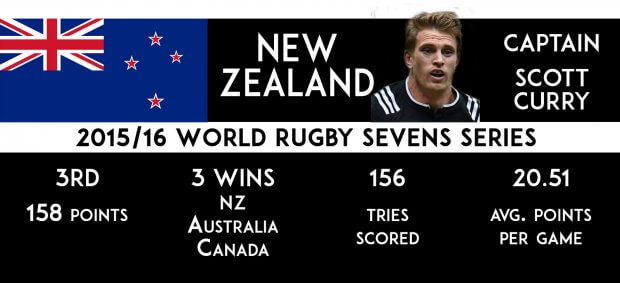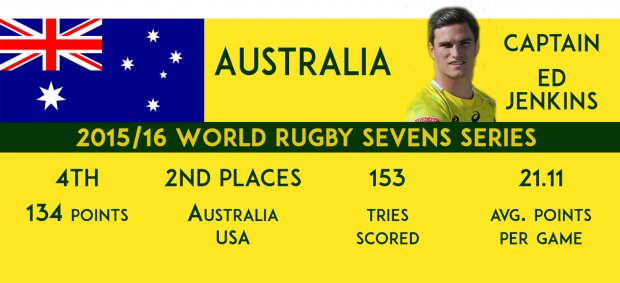With the men’s rugby 7s’ debut at the Olympic Games right around the corner, GAGR is bringing you fellow rugby fans a two-part guide to the game. The first half was about the different roles within a sevens team. This half will cover how the top four teams approach the game strategically and a bit of insight into how the Aussies plan to stop them thanks to Australian men’s 7s coach Andy Friend. You can hear our full interview with Andy in the podcast below.
Who has qualified?
First of all: Unlike the common format of the travelling world 7s series, the Olympics tournament will only feature 12 teams instead of 16. Furthermore, with the addition of the hosts, qualification on a continental basis and geopolitical vagaries, there will be a few more differences in the teams playing at the Olympics.
So, Brazil has been put into the mix. Included in a few legs of last season’s 7s series to give them much needed experience, Brazil would have a small chance of qualifying if the Olympics were held elsewhere. They came last in all three of their appearances.
Fortunately, the best 8 teams from last season’s 7s series will be appearing at the Olympics. However, the winners of two of the legs – Samoa and Scotland – won’t be appearing.
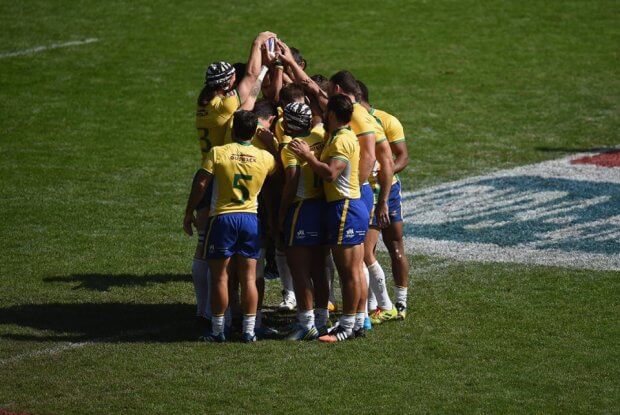
While Australia pipped Samoa to the only qualifying spot from Oceania – NZ and Fiji qualified through their performances in the regular series – Scotland will be represented by the English team, being the highest placed British nation, will be representing the UK.
Check out the groups, with each nation’s record in last season’s 7s series, below. Surprise surprise, New Zealand has the weakest group again.
As can been seen in the graphic, the top teams are, in order of topness: Fiji; South Africa; New Zealand; and Australia (hey, that’s us!). For this guide, we’ll be focusing on these favourites.
Fiji
Up the guts and into ’em is the default Fijian mode. Well, ok, there’s a bit more to it than that.
The Fijians aim to draw in defenders by smashing through the middle, their superhuman ability to ball carry coming in handy. Having done so, they then seek to offload however they can. Out the back of the hand, over their heard, through their legs – whatever works (and it usually does work).
This works so well for the Fijians for a few reasons. Obviously, they’re good at what they do, and their natural flair and their supreme confidence shines through in every play they make.
On a tactical level, as can be seen when Kiwi sides do offload after offload in Super rugby, once a break is made and the ball offloaded, the attacking side are in a great position to exploit the broken play. As Friend describes it, “Once they break through your line you’re gone, because their players somehow magically link up and they continue that movement on.”
The Fijians, being the Goliaths that they are, are unsurprisingly big in defence too. Not everything’s perfect for the Fijians though, as Friend has found a little bit of an Achilles heel in the team: they don’t like going to ground in a tackle, the coach points out, “and if you can leverage them down you can upset a lot of their momentum.”
Fiji goes up Australia’s guts:
South Africa
The Blitzboks are not too far away from the Springboks, with Friend describing them as “the most 15s-like of any team on the 7s circuit.”
The highest kicking team of the lot, the Saffers look to make territory and put pressure on teams with kicks behind the defensive line. They also love their set plays and training ground moves, with Friend pointing out that “they only ever kick one restart, everyone knows what it is: a kick to the right-hand side”.
In fact, they’re so system-focused that Friend knows the outcomes of that specific set-play: “You’ve got to win that catch, and you know you’ll get whacked by the South Africans, and you know if you pass the ball out between the channels that they are going to come up and shut you down.”
Having forced teams into responding to their well-drilled set plays, the South Africans hone in in defence, bringing heavy hits in the following sequence of open play and keeping their eyes peeled wide open for any turnover opportunities in the breakdown.
South Africa’s kickoff gameplan works a treat:
New Zealand
Like the Fijians, the New Zealanders are big boppers who play a physical game, aiming to bash and bully teams off the ball.
However, unlike the Fijians, the Kiwis don’t primarily aim to charge with the ball in the midfield. Instead, they employ the old trick of passing it wide and exploiting the channels with power runners. If that doesn’t really work, at least the attack has drawn defenders to one side of the field, so the Kiwis then switch the ball out to the other side to exploit the space there.
Whereas the Kiwis might try to also bully other teams with their huge frames, they also throw in a good dose of power running on the wings.
New Zealand go side-to-side and then use a power runner to open up space for the try that won them the Sydney Sevens at the death:
Australia
Finally, the good guys.
Australia is hard to pin down. The team plays a mixture of styles, approaching a game in a more practical and reactive way, with a hardworking and clinical culture having a greater say in the team’s play than a specific structure.
While the team can’t match the Kiwis or Fijians in physicality, they’re also not as rigid as the South Africans. The fellas look to attack through the middle and around the side, as well as playing with a bit of structure and sometimes kicking behind the defense too.
So, Friend defines the Australian team using abstraction: “we’re unrelenting and clinical,” he says.
“We have a unique setup. The players that we get are hard workers, so we just go out and play what’s in front of us and do it in a clinical way. When we’ve got the footy, we try to get through [the other team] and we try to be really clinical, and through the weight of possession, and our drive and desire, we’ll overpower and run over the top of you.”
Or, in other words, the team’s spirit animal is the Australian Terrier. No, really: “We just keep yapping away and we just keep barking at you.”


